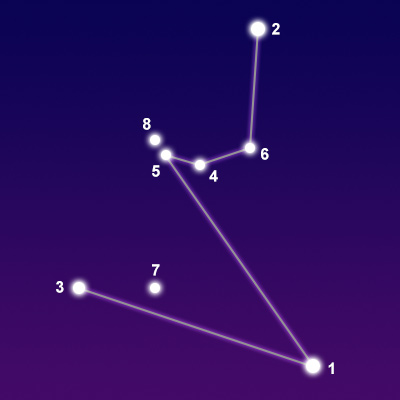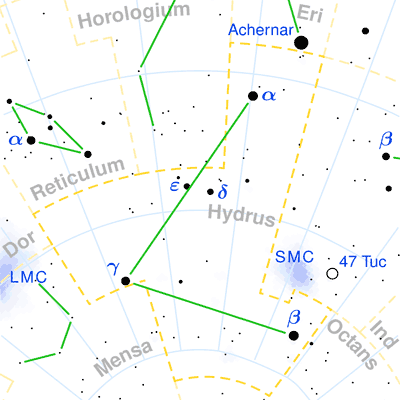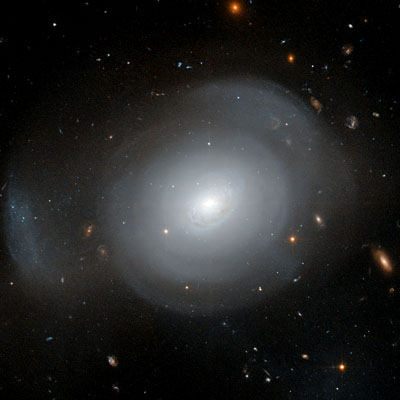Pronunciation:
(HYD-russ)Abbreviation:
HyiGenitive:
HydriRight Ascension:
2 hoursDeclination:
-75 degreesArea in Square Degrees:
243Crosses Meridian:
9 PM, December 10Visible Between Latitudes:
5 and -90 degreesThe constellation Hydrus, the southern water snake, is located in the southern hemisphere of the sky. It can be seen at latitudes south of 8 degrees from September through November. Hydrus is a small constellation, with a total area of only 243 square degrees in the night sky. This makes it the 61st constellation is size among the 88 constellations in the night sky. It is bordered by Mensa to the southeast, Eridanus to the east, Horologium and Reticulum to the northeast, Phoenix to the north, Tucana to the northwest and west, and Octans to the south. This constellation remains below the horizon for most observers in the Northern Hemisphere.
There is no mythology associated with Hydrus. The constellation is located so far south that it was not visible to the ancient Greeks or Romans. It was mapped by Dutch navigators and represents the sea snakes they would have encountered on their voyages. It first appeared on a celestial globe published by Dutch astronomer Petrus Plancius in 1597 and was one of twelve constellations included in Johann Bayer’s star atlas in 1603. It is often confused with Hydra, the much larger constellation farther north.

points of interest below © Sea and Sky

© Torsten Bronger CC BY-SA 3.0
Head of Hydrus
Gamma Hydri
Delta Hydri
Epsilon Hydri
Eta-2 Hydri
Nu Hydri
Zeta Hydri
N/A
N/A
N/A
N/A
N/A
N/A
N/A
Yellow-White Subgiant Star
Red Giant Star
White Dwarf Star
Blue-White Dwarf Star
Yellow Giant Star
Orange Giant Star
White Subgiant Star
2.90
3.26
4.08
4.12
4.68
4.76
4.83
Hydrus contains only a few stars brighter than magnitude 4. The brightest star is Beta Hydri with a visual magnitude of 2.82. It is a yellow subgiant star located about 24 light years from Earth. With a magnitude of 2.9, Alpha Hydri is the second brightest star. Known also as the Head of Hydrus, this star is a yellow-white subgiant that is some 72 light years distant. Gamma Hydri is the third brightest star with a magnitude of 3.26. It is a red giant star located about 214 light years from Earth and 655 times more luminous than the Sun.
Hydrus contains no Messier objects and only a few faint deep sky objects that can only be seen with large telescopes. One of the most notable of these is a very old and large galaxy called PGC 6240. It is also known as the White Rose Galaxy because its shape resembles that of a rose. It is located approximately 345 million light years from Earth.

© ESA/Hubble / CC BY 4.0



